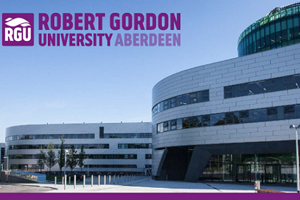Study In Robert Gordon university, Robert Gordon university course list, Robert Gordon university, Robert Gordon university UK,Study In Robert Gordon university, Robert Gordon university, Robert Gordon university Fees, Robert Gordon university UK, Robert Gordon university Ranking, RGU is ranked first in Scotland and 4th in the UK. Study In Robert Gordon university, fees, Robert Gordon university course list, Robert Gordon university Ranking, Robert Gordon university Courses, Robert Gordon university Fees.
Robert Gordon university
Countries
Visitors
Visa Granted
Subjects
Robert Gordon university – Description
Robert Gordon University, commonly called RGU, is a public university in the city of Aberdeen, Scotland. It became a university in 1992, and originated from an educational institution founded in the 18th century by Robert Gordon, a prosperous Aberdeen merchant, and various institutions which provided adult education and technical education in the 19th and early 20th centuries. It is one of two universities in the city (the other is the much older University of Aberdeen). RGU is a campus university and its single campus in Aberdeen is at Garthdee, in the south-west of the city.
The university awards degrees in a wide range of disciplines from BA/BSc to PhD, primarily in professional, technical, health and artistic disciplines and those most applicable to business and industry. A number of traditional academic degree programmes are also offered, such as in the social sciences. In addition, the university’s academic and research staff produce research in a number of areas.

campus
The university derives from Robert Gordon’s Hospital, an institution set up in the mid-18th century to provide the poor with a basic education and reasonable start in life, and the various educational institutions which developed in Aberdeen to provide adults with technical, vocational and artistic training, mostly in the evenings and part-time. Following numerous mergers between these establishments, it became Robert Gordon’s Technical College in 1910, then following further developments became Robert Gordon’s Institute of Technology in 1965 and began to conduct increasing amounts of research and provide degree-level education (by now mostly offering day classes to full-time students). Finally, it became a university in 1992. Unlike some modern universities in the UK which were created following the government reforms of 1992, it has never been a polytechnic (these were never part of the Scottish education system).
Robert Gordon was a Scottish merchant, who had grown up in Aberdeen and graduated from Marischal College. Following a successful career, mostly in Danzig where he amassed a fortune, he retired to Aberdeen around 1720. In the last decade of his life, he prepared plans for a Hospital similar to that founded in Edinburgh by George Heriot. The purpose of Robert Gordon’s Hospital was “the Maintenance, Aliment, Entertainment and Education of young boys whose parents are poor and indigent… and to put them to Trades and Employment”. Gordon died in 1731, and left his entire fortune to the project. However, it took nearly two decades for buildings to be completed, with the first boys admitted in 1750. The aim was not a sophisticated education, but to provide the poor with a reasonable start in life. Boys were taken in between 8 and 11 years old and received food, accommodation and a basic education including English, Latin, writing and arithmetic. They left the Hospital between 14 and 16 years old as an apprentice in a trade or to a merchant. The Hospital expanded through the 18th and 19th centuries.
Robert Gordon university Course List
ELIGIBILITY CRITERIA IN GENERAL

COUNTRIES


